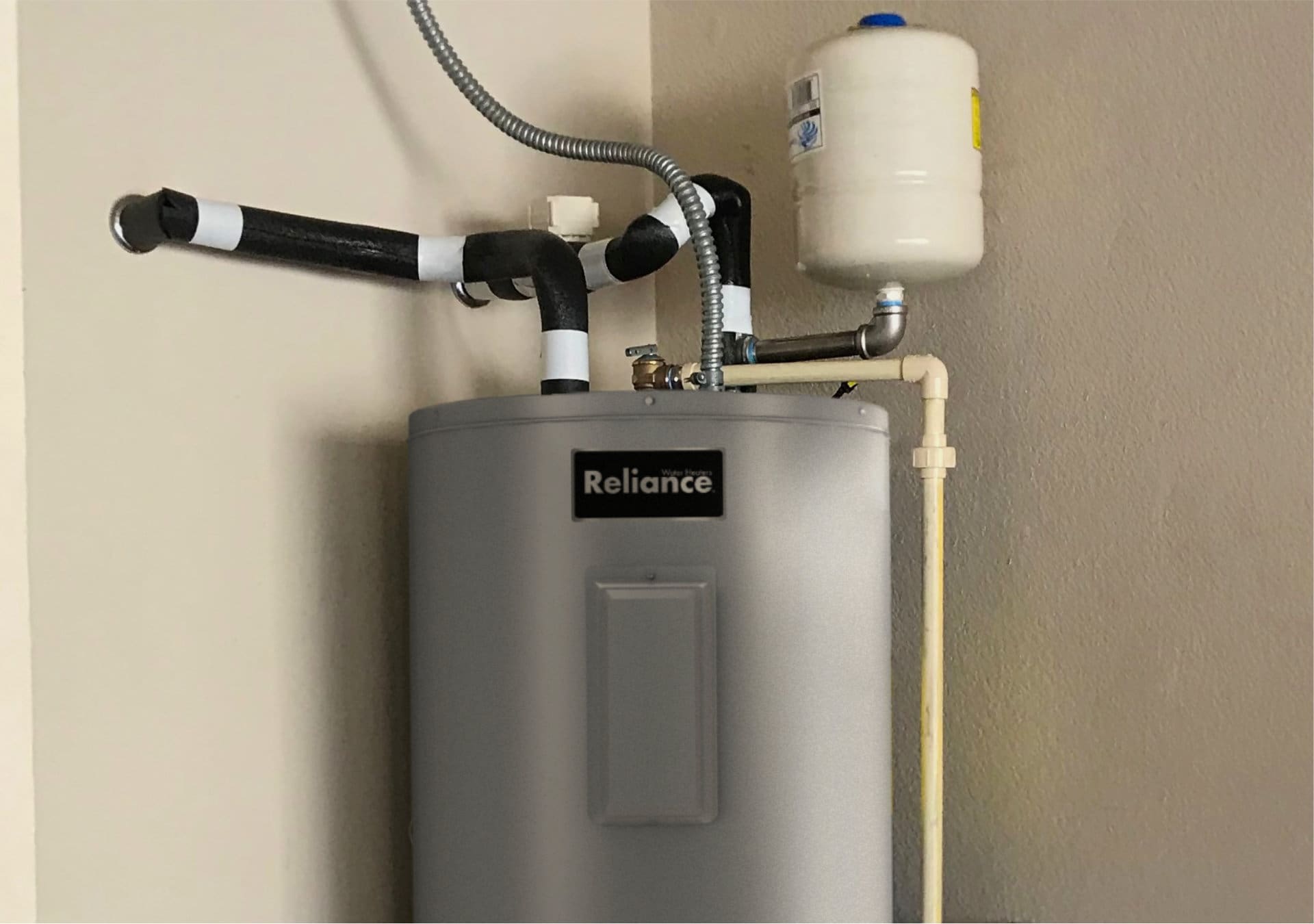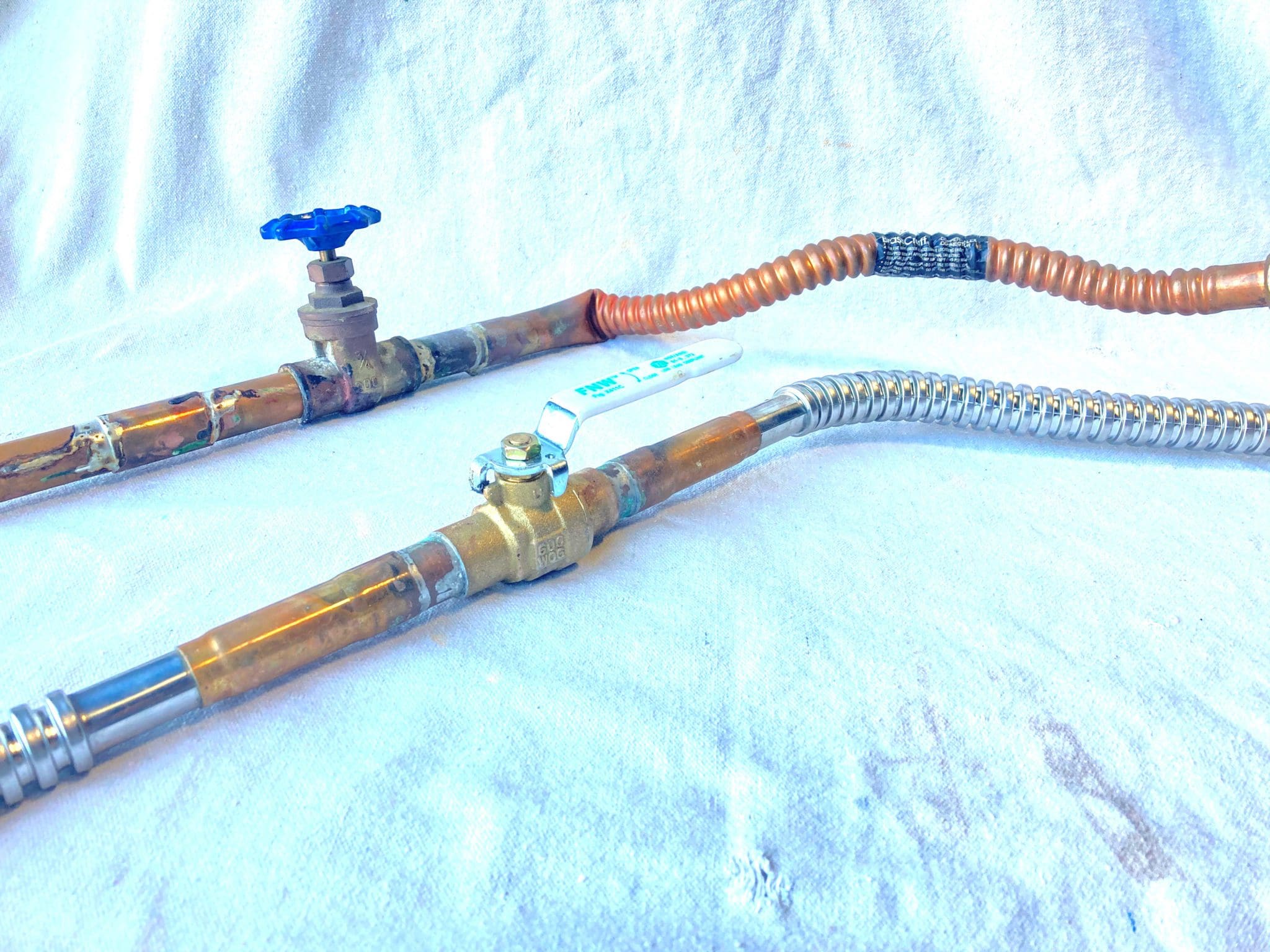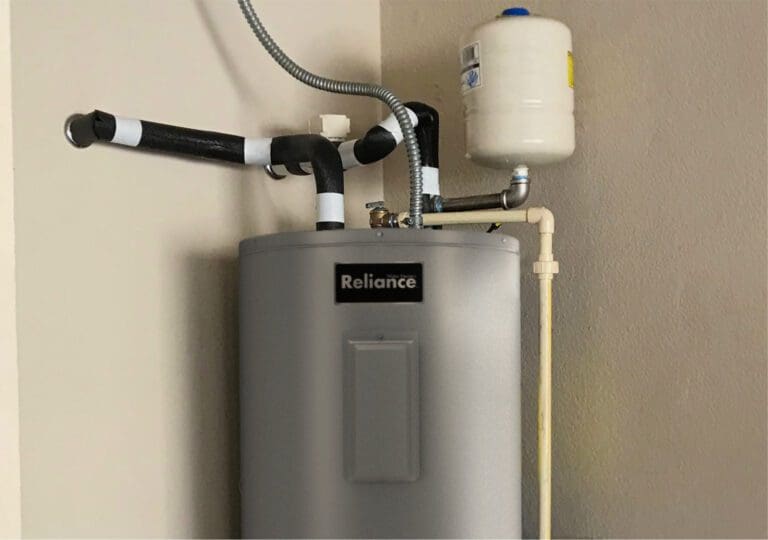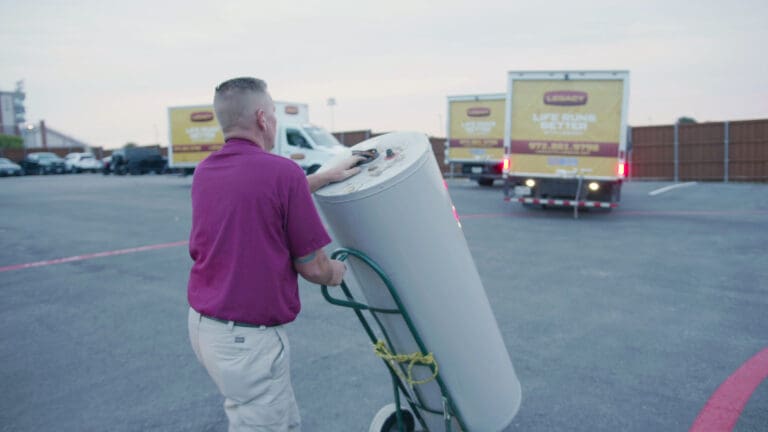You may have heard about water heaters needing expansion tanks in Frisco, Plano and North Dallas. You may see an expansion tank near your water heater and have questions. We talked about what expansion tanks are and how to check in in a previous blog article. So, today we’re going to go into more detail about where to locate your expansion tank and what the different common installation practices are.
Most expansion tank manufacturers specify that the expansion tank must be installed between the backflow preventer and the water heater. This means that you should find the expansion tank on the cold water side of the system.
Because the expansion tank is typically replaced when the water heater is replaced, you will most often find the expansion close to the water heater itself. Usually, it is obvious and not difficult to find. If the expansion tank was installed further away from the water heater, and the water heater is located in a dark attic, you might very well miss it if you aren’t looking. Here are some step-by-step instructions for how to locate your expansion tank:
The first step is to find the water heater. If you don’t know where your water heater is located, check out this blog article that answers that question.
Once you know where the water heater is, find the cold water inlet to the water heater. This should be on the right-hand side of the water heater’s top if you are standing directly in front of it.
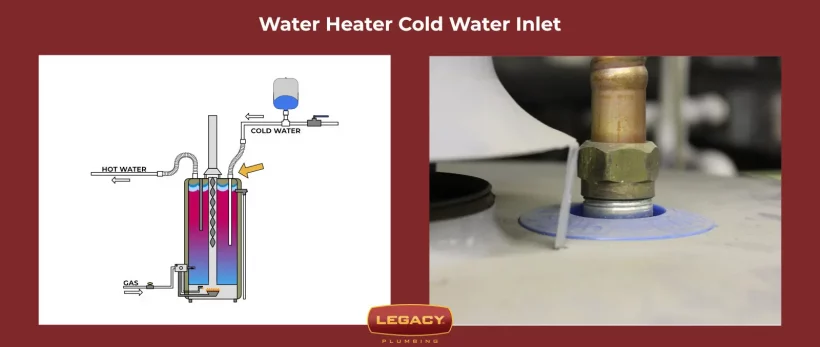
Follow that line back until to see if you can find a “tee” fitting where another pipe connects to the one you are following.
Pro Tip: The water lines will likely be covered in some type of pipe insulation if it is installed in an unheated area. If need be, you can use a box knife to cut this insulation off to better see where the water pipes lead to. Just don’t forget to put the insulation back when you are done and secure it in place to protect the pipes against freezing weather.
Once you find a “tee” connection, follow that second pipe back until you find the expansion tank.
If you don’t find that “tee” connection, keep following the cold water pipe back. You should pass a shut-off valve somewhere along the way. This is the main valve that shuts off the water to the water heater and the hot side of the system. Learn more about these shut-off valves in our blog article dedicated to this topic.
Keep following this main back until you cannot any further. If you haven’t found the expansion tank yet, there likely is none.
Here are some examples of expansion tanks installed in different locations:
Expansion Tank Attached Before Water Heater Supply Connector
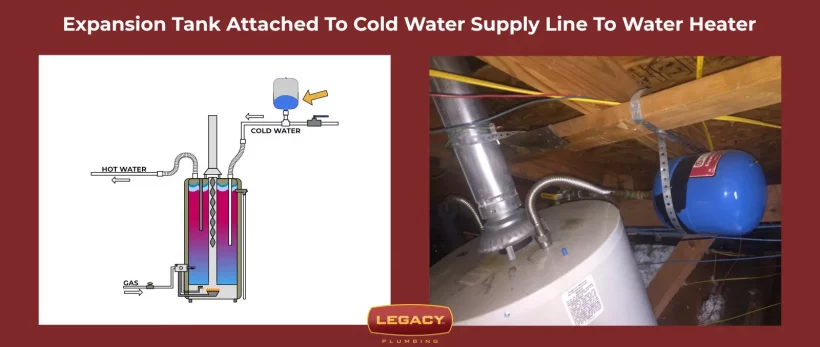
This is the type of installation we find the most often in Frisco and surrounding cities. The expansion tank is connected directly to the main water line above the water heater. It attaches before the pipe transitions to a flexible water connector.
There are two main weaknesses of this setup. First, the expansion tank must be properly strapped or secured to a part of the framing because the copper or PEX water pipe was not designed to support the extra weight.
Secondly, if a steel expansion tank is connected directly to a copper fitting, this can cause a deterioration of the metal called galvanic corrosion. Look for signs of corrosion around the connection point. Many expansion tanks have leaked catastrophically in this way.
Expansion Tank Resting On Floor Near Water Heater

This setup is less common, but we still occasionally run across it in the DFW area. Instead of being directly connected to the water pipe above the water heater, the tee extends downward so that the expansion tank can rest on the floor somewhere near the water heater.
This arrangement has the advantage of properly supporting the expansion tank so that there isn’t any stress on the pipe. However, because the expansion tank is not over the water heater (and consequently the emergency pan underneath the water heater), there is a high chance of water damage if the expansion tank starts to leak.
Furthermore, the expansion tanks installed in this manner are often more hidden away and run the risk of not being checked and replaced as frequently as they should.
Expansion Tank Mounted Directly To Water Heater
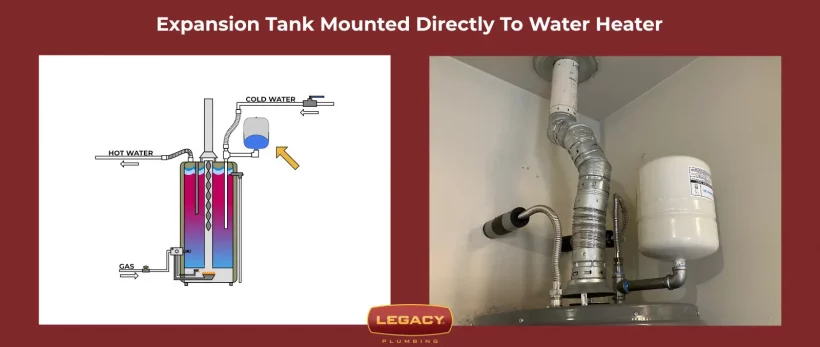
This type of mounting situation is becoming more common in the North Dallas area. Instead of being mounted on the cold water pipe before it transitions to the flexible water connector, the expansion tank is connected directly to the water inlet of the water heater with threaded fittings.
This setup has several advantages. First, it locates the expansion tank directly above the water heater so that the risk of water damage from a leak is minimized. Secondly, it placed the expansion tank in a prominent, easily accessible location for maintenance. Thirdly, the expansion tank is well-supported by being connected to the water heater.
Care must be taken in selecting the right fittings to make this connection. The best fittings to use are made from stainless steel. These fittings minimize the chance of corrosion and are very durable. Sometimes, we see expansion tanks installed in this way with galvanized pipe and fittings (which look similar to stainless steel at first glance). These seldom last very long before failure and should not be used.
Not All Expansion Tank Installations Are Equal
The different installation practices above demonstrate the most common expansion tank locations in the North Dallas area. As you can see, there are definite advantages and disadvantages to the different approaches. This can also vary in different situations.
There is even more variety when it comes to brands of expansion tanks and types of fittings used to connect them! Unfortunately, we have seen many homes suffer significant water damage from faulty expansion tank parts and installations. Here are a few expansion tank connections in various stages of deterioration:

Legacy Plumbing is committed to using the best materials we can find and developing the best installation practices when we replace expansion tanks. That is why if you need your expansion tank checked or replaced, you can trust Legacy Plumbing to get the job done right!




